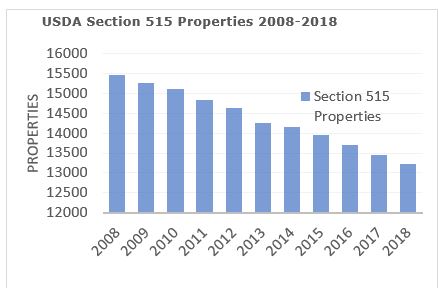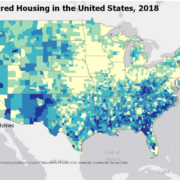News Formats. pdf
March 8, 2019
Vol. 48, No. 5
March is Women’s History Month • Apply by March 11 for grants to support housing aid to rural veterans • Senate committee recommends Calabria for FHFA • 200 ERS employees to move out of Washington • Child poverty could be cut in half within 10 years, report says • Deadlines set for ReConnect broadband program requests • House committee hearings address housing topics • USDA releases annual data on tenants • RuralSTAT • Hispanic poverty rate dropped in 2017, especially in nonmetro areas • Corporate investment in manufactured home communities is pricing out residents, report says • Rural America is losing nursing homes • HAC webinar to review Section 502 updates • HAC symposium on rural veterans’ housing and services scheduled for April in Arkansas
HAC News Formats. pdf
March 8, 2019
Vol. 48, No. 5
March is Women’s History Month.
Apply by March 11 for grants to support housing aid to rural veterans.
HAC’s Affordable Housing for Rural Veterans initiative supports local nonprofit housing development organizations that meet or help meet the affordable housing needs of veterans in rural areas. Grants may be up to $30,000 and must support bricks-and-mortar projects that assist low-income, elderly and/or disabled veterans with home repair and rehab needs, support homeless veterans, help veterans become homeowners and/or secure affordable rental housing. This initiative is funded through the generous support of the Home Depot Foundation. Applications are due March 11. For more information, contact HAC staff, ahrv@ruralhome.org.
Senate committee recommends Calabria for FHFA.
On February 26 the Senate Banking Committee voted to approve the nominations of Mark Calabria to become head of the Federal Housing Finance Agency, Robert Hunter Kurtz to be HUD’s Assistant Secretary for Public and Indian Housing and Seth Appleton to be HUD’s Assistant Secretary for Policy Development and Research. The selections will be considered by the full Senate next.
200 ERS employees to move out of Washington.
The planned relocation of USDA’s Economic Research Service will involve moving about 200 positions outside the Washington, DC area while about 76 remain in place, according to an exclusive report by Politico Pro (subscription required), which says employees have been informed whether their positions will be moved. Congress expressed concern about the move in the conference report accompanying the final omnibus FY19 appropriations bill. USDA Secretary Sonny Perdue reiterated his support at a recent House Agriculture Committee hearing on the rural economy.
Child poverty could be cut in half within 10 years, report says.
A Roadmap to Reducing Child Poverty, published by the National Academies of Sciences, Engineering, and Medicine, uses data on existing programs to identify ways to reduce child poverty and its serious impact on the U.S. economy. One of the successful models, a “means-tested supports and work package,” would include expanding HUD’s voucher program. The cost of cutting the child poverty rate would be far lower than the costs of continued child poverty. The report is available as a free download or a paperback book. Data tables and other resources are posted online.
Deadlines set for ReConnect broadband program requests.
The Rural Utility Service published a NOFA for the new Rural eConnectivity Pilot Program on December 14, 2018, with tentative application deadlines. The agency has now announced the final deadlines for the three funding categories are May 31, June 21 and July 12, 2019. It will announce this month when it will begin accepting applications. For more information, contact Chad Parker, RUS, 202-720-9554.
House committee hearings address housing topics.
New chairs of several House committees and subcommittees are pursuing subjects related to affordable housing. The Financial Services Appropriations Subcommittee looked into the role of Community Development Financial Institutions on February 26; witnesses and subcommittee members emphasized the importance of safe, reliable financial services options in rural areas and the role of capacity building for long-term success in rural economies. The House Transportation-HUD Appropriations Subcommittee has held hearings on fair housing, housing production and HUD’s management of housing contracts during the government shutdown. The House Financial Services Committee convened a hearing on homelessness on February 13.
USDA releases annual data on tenants.
USDA has released its annual fair housing occupancy report, providing data on the characteristics of tenants in its multifamily portfolio. The report, which uses September 2018 data, shows the average annual income of Section 515 tenant households is $13,112 with the average income of Section 515 residents who receive USDA Section 521 Rental Assistance at $10,911. The report says the number of properties in USDA’s rental portfolio fell by 1.79 percent over the past year. The portfolio lost 227 Section 515 properties and 24 farmworker housing properties, with a total of 4,820 units. For more national and state-level data for tenants living in Section 515 rental housing, living in Section 514/516 farm labor housing, or receiving Section 521 Rental Assistance, read this and past years’ reports on HAC’s website. 
RuralSTAT. The number of USDA Section 515 multifamily rental properties declined from 15,459 in 2008 to 13,231 in 2018. The number of available rental units in USDA Section properties now stands at just over 400,000 units. For more information on rural rental housing, see HAC’s report, Rental Housing for a 21st Century Rural America: A Platform for Preservation.
Hispanic poverty rate dropped in 2017, especially in nonmetro areas.
The national poverty rate dropped to 12.3% in 2017. Although most racial/ethnic groups saw no statistically significant change, the poverty rate for Hispanics fell 1.1 percentage points to 18.3%, the Census Bureau reports, and 5.7 percentage points for those living outside metro areas. Hispanics continue to be overrepresented among the population in poverty, however. In 2017 they were 18.3% of the total U.S. population, but 27.2% of the population in poverty.
Corporate investment in manufactured home communities is pricing out residents, report says.
There is a growing trend of investment companies purchasing manufactured housing communities, raising rents and reducing maintenance, according to a new report from the Private Equity Stakeholder Project, MHAction, and the Americans for Financial Reform Education Fund. Residents, many with low incomes, find it hard to move because they own their homes but not their lots, the cost of moving a home is prohibitive, and finding a new location is difficult.
Rural America is losing nursing homes.
According to reporting from the New York Times, more than 440 rural nursing homes have merged or closed down during the last decade. These closures have scattered residents, many of whom end up in different nursing homes located far from their families. The Times cites many reasons for nursing homes to close, including loss of funds, new care options, difficulty finding adequate staff and health code violations.
HAC webinar to review Section 502 updates.
“USDA Section 502 Loan Program Updates: USDA Handbook 1-3550 Updates from 2017-2019” is scheduled for March 27 at 2 pm eastern time. It will cover changes to the Section 502 direct loan program implemented during FY17 and 18, most of which relate to the determination and documentation of applicant assets, income and credit history. For more information, contact HAC staff, 404-892-4824.
HAC symposium on rural veterans’ housing and services scheduled for April in Arkansas.
HAC’s 5th Annual National Symposium on Veterans Housing Issues will be held April 18-19 at Arkansas State University in Jonesboro, sponsored by the Home Depot Foundation. This year’s theme centers on addressing the critical needs around housing, homelessness and aging solutions for rural veterans, within the context of the Delta Regional Authority’s eight-state service area. There is no fee to attend, but space is limited and advance registration is required. For more information, contact Cheryl Cobbler, HAC.
Need capital for your affordable housing project?
HAC’s loan funds provide low interest rate loans to support single- and multifamily affordable housing projects for low-income rural residents throughout the U.S. and territories. Capital is available for all types of affordable and mixed-income housing projects, including preservation, farmworker, senior and veteran housing. HAC loan funds can be used for pre-development, site acquisition, site development and construction/rehabilitation. Contact HAC’s loan fund staff at hacloanfund@ruralhome.org, 202-842-8600.
Please note: HAC is not able to offer loans to individuals or families. Borrowers must be nonprofit or for-profit organizations or government entities (including tribes).



